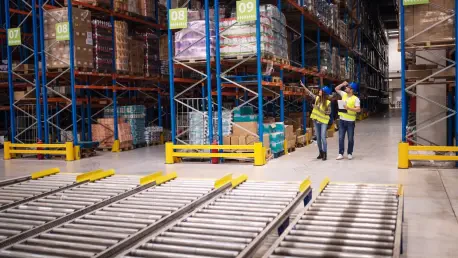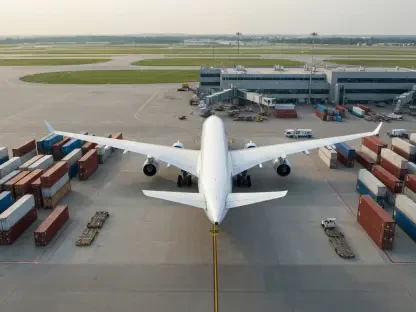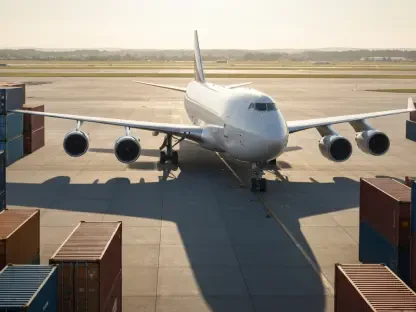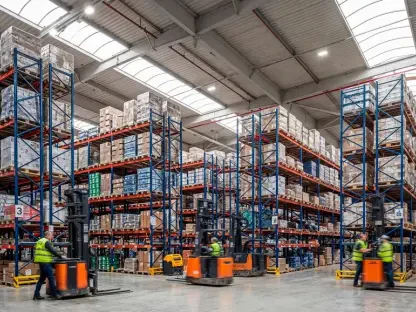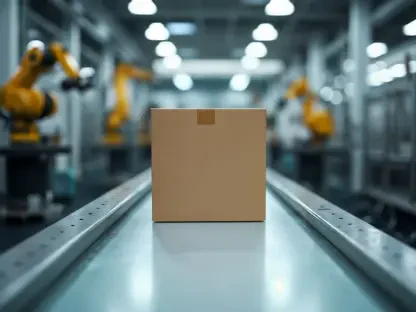In today’s bustling industrial landscape, warehouses play a pivotal role in ensuring the seamless flow of goods from manufacturers to consumers. The backbone of these operations lies in the racking systems, which require meticulous attention to safety standards and innovative storage solutions. As warehouse dynamics evolve, so too does the emphasis on bolstering safety measures and embracing advanced racking technologies. This shift not only aids in maximizing space but also aligns with global standards to maintain operational efficiency and worker safety.
Importance of Regular Inspections
Ensuring Compliance and Worker Safety
Within any warehouse environment, maintaining an up-to-date and compliant racking system is crucial for safety and efficiency. Essential to this is the practice of conducting regular inspections, where attention to detail can significantly reduce the risk of accidents. Such inspections should be performed at least annually by a certified and experienced individual, thereby ensuring that all structural concerns are addressed promptly. The results of these examinations must be thoroughly documented and reported to the Person Responsible for Racking Safety (PRRS), ensuring accountability at all levels. The rigorous process involves identifying potential hazards, evaluating the existing conditions, and proposing necessary improvements to align the facility with current safety protocols.
In recent years, the SEMA Approved Racking Inspector (SARI) program has played an instrumental role, offering comprehensive training and certification for industry professionals. This initiative ensures that inspectors are equipped with the latest knowledge and techniques for assessing racking systems, ultimately fostering an industry-wide dedication to safety. By championing these measures, warehouses not only protect their workforce but also safeguard their inventory and reputation from potential risks associated with outdated or faulty racking systems.
Industrial Trends and Collaborations
In a world where space efficiency and optimized storage are paramount, the demand for tailor-made racking solutions has grown exponentially. The partnership between AR Racking and Reolfag in Norway is a prime example of industry leaders joining forces to innovate and enhance storage solutions. This collaboration highlights a broader trend within Northern Europe and beyond, where customized and efficient storage capabilities are becoming the norm. By focusing on designing and implementing systems that maximize capacity while maintaining safety, these partnerships are setting new benchmarks in industrial storage.
This increased demand is not only shaping new business relationships but also driving technological advancements in storage solutions. Companies are now investing in smarter, more versatile racking designs that cater to specific logistical needs. Such innovations are pivotal in adapting to variations in product sizes and weights, further proving that collaboration and innovation go hand-in-hand in advancing the warehousing industry.
Pioneering Storage Solutions
Innovative Racking Products
With safety and efficiency at the forefront, many companies are unveiling sophisticated racking systems designed to meet diverse industrial needs. Anco, for instance, has developed the TS Longspan Shelving and Heavy Rivet Racking systems that boast superior load-bearing capacities. These products offer flexibility and robustness, essential qualities for managing varied inventory types in dynamic warehouse settings. Particularly beneficial for industries handling heavy or bulky goods, these racking systems stand out for their adaptability and strength, ensuring that even the heaviest loads are stored securely without compromising accessibility.
Moreover, Anco’s innovations reflect wider industry efforts to move towards modular designs that can easily adapt to different storage configurations. This approach is not just about handling weight but also about embracing versatility in layout designs. As warehouse requirements vary, having a reliable yet flexible racking system can dramatically improve operational flow and space utilization, ultimately enhancing productivity.
Advanced Technology in Automation
Innovation in warehousing is not solely limited to physical racking structures; significant advancements in automation are reshaping how storage solutions are approached. A notable example is KNAPP’s Evo Shuttle automated storage system, engineered to efficiently manage diverse items ranging from pharmaceuticals to food products. This cutting-edge technology showcases how automation can merge seamlessly with traditional storage techniques to offer a holistic approach to inventory management. Automated systems like the Evo Shuttle increase efficiency by minimizing human error and enabling round-the-clock operations, thus meeting the high-demand cycles characteristic of contemporary markets.
The integration of automated systems into conventional warehousing operations is indicative of a broader move towards digital transformation in logistics. By incorporating intelligent systems that proactively manage and transport inventory, companies can achieve greater accuracy and speed, crucial elements for maintaining competitive advantage. This blend of automation with robust racking solutions heralds a new era of warehousing where scalability and agility are paramount.
Concluding Insights and Future Directions
In the bustling world of modern industry, warehouses serve as the critical junctures, facilitating the smooth transition of goods from producers to the end consumer. At the heart of these operations are the robust racking systems, playing a vital role in not only storage but also shaping the workflow within these expansive spaces. As warehouse environments continuously evolve, there’s a growing emphasis on enhancing safety measures and leveraging cutting-edge racking technologies. This progression is essential not only for optimizing spatial use but also for ensuring alignment with international safety standards and efficiency protocols. In the pursuit of excellence, warehouses are increasingly focusing on integrating sophisticated solutions that meet the dual needs of maximizing storage capacity and safeguarding worker well-being. By doing so, they contribute to a streamlined supply chain, fostering a system that is both secure and efficient, positioning themselves as indispensable components of the global distribution network.
